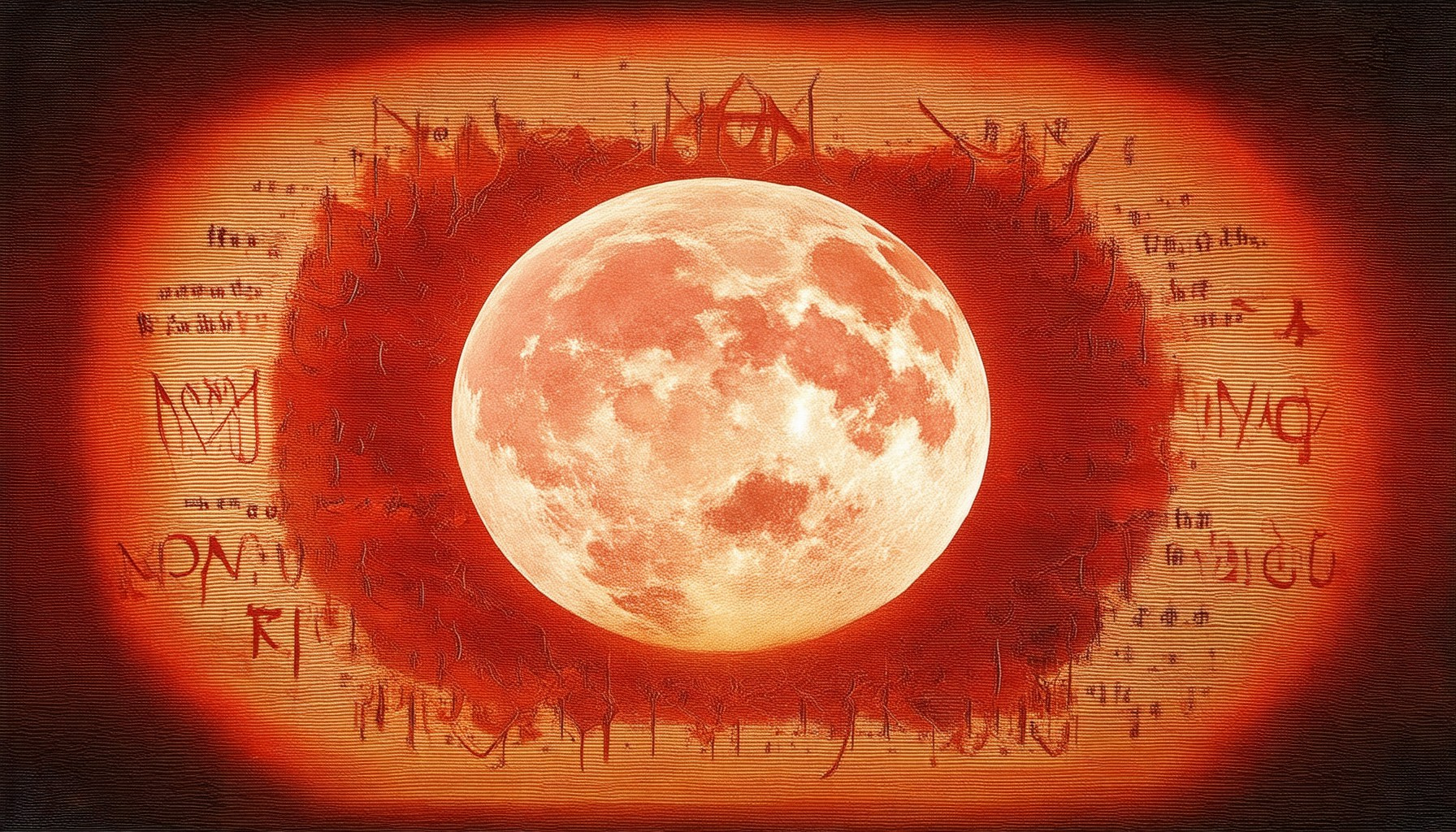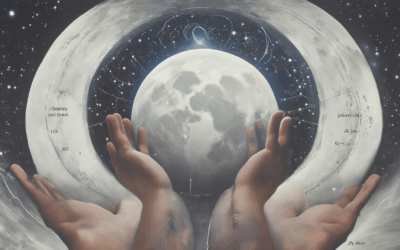The phenomenon of a blood moon, characterized by the reddening of the lunar surface during a total eclipse, has captivated humanity for centuries. This rare event, often referred to as the “Blood Moon Prophecy,” carries profound spiritual, historical, and cultural significance. From its biblical references to its modern-day interpretations, the blood moon has been seen as a sign of momentous change, spiritual awakening, and celestial wonder. In this comprehensive guide, we delve into the spiritual significance, historical context, and practical guidance surrounding the blood moon, exploring its meanings, rituals, and superstitions to provide a well-rounded understanding of this enigmatic phenomenon. Whether you’re seeking insight into its symbolic meanings or guidance on how to engage with its energy, this article offers a wealth of information to enrich your journey of discovery.
Key Takeaways
- Understanding the Blood Moon: A blood moon refers to a total lunar eclipse, where the moon turns red due to Earth’s shadow, offering a captivating yet natural celestial event.
- Cultural Superstitions: Various cultures attribute mystical or ominous meanings to blood moons, including Hindu myths of the demon Rahu, Chinese Nüwa Festival celebrations, and Greek beliefs of impending disasters.
- Scientific Explanation: The red hue results from sunlight scattering off Earth’s atmosphere during a total eclipse, caused by the moon passing through Earth’s umbra.
- Blood’s Spiritual Significance: Blood symbolizes life, sacrifice, and transformation, revered in many traditions for its roles in rituals, healing, and spiritual practices.
- Practical Spiritual Uses: Blood is employed in offerings, cleansing, and divination, reflecting its deep symbolic and transformative power across cultures.
- Natural Event Perspective: The blood moon is a normal astronomical occurrence, inspiring wonder without apocalyptic connotations, highlighting its natural beauty and cosmic significance.

What Does the Bible Say About Blood Moons?
The term “blood moon” refers to a rare astronomical event known as a lunar eclipse, specifically a total eclipse, where the moon appears reddish due to the Earth’s shadow covering it.
In the Bible, the phenomenon is referenced in Joel 2:31–32 , which states:
“The sun will be turned to darkness, and the moon will be blood before the coming of the great and dreadful day of the Lord. And everyone who calls on the name of the Lord will be saved.”
This passage is often interpreted within the context of biblical prophecy, suggesting a time of intense judgment and spiritual awakening. The imagery of the blood moon serves as a symbol of God’s sovereignty over creation and His preparation for the last days.
To better understand this, consider the following:
- Definition of Blood Moon: A total lunar eclipse occurs when the moon passes through Earth’s shadow, giving it a reddish appearance. This rare event has captivated cultures and astronomers alike.
- Biblical Context: While the Bible doesn’t explicitly refer to “blood moons” as a standalone term, the description aligns with the imagery of lunar eclipses during significant prophetic events.
- Prophecy and Interpretation: Some interpret this as a sign of the end times, coinciding with descriptions in Revelation and other apocalyptic literature.
- Spiritual Significance: Beyond the natural wonder, it highlights God’s power over the heavens and His role as the ultimate judge of humanity.
Understanding the Bible’s portrayal of celestial events helps us grasp the broader themes of judgment, redemption, and trust in God’s timing. As we observe such marvels, it reminds us of our place in the universe and the ultimate hope in Christ.
The Spiritual Significance of the Blood Moon
A blood moon, occurring during a total lunar eclipse, carries profound spiritual meanings across various cultures and traditions. This celestial event symbolizes introspection, transformation, and a deep connection to the hidden aspects of oneself.
1. Time for Reflection and Healing
- The blood moon often signifies a moment to pause and reflect on one’s life. It encourages individuals to release outdated patterns and emotional wounds, fostering healing and personal growth.
- This phase may prompt a journey inward, allowing for the exploration of hidden emotions such as grief, anger, or fear that have been buried below the surface.
2. Embracing the Shadow Self
- Culturally, the blood moon has been associated with embracing the “dark side” or shadow aspects of oneself. It serves as a reminder that balance is essential in life, and both light and dark must coexist.
- This period can act as a mirror, reflecting what one chooses to hide or neglect, urging individuals to confront these aspects with courage and compassion.
3. Catalyst for Transformation
- Many interpret the blood moon as a time of intense transformation. It may signify a shift in life direction, urging individuals to let go of old ways and embrace new opportunities for growth.
- During this time, people often feel compelled to take action on repressed desires or face challenges they have avoided, leading to significant personal evolution.
4. Connection to Nature and Cosmology
- In many indigenous traditions, the blood moon is viewed as a time to honor nature spirits and ancestral energies. It is believed to bridge the gap between the physical and spiritual realms.
- Astrologically, a blood moon can indicate a period of heightened intuition and emotional sensitivity, encouraging individuals to align their actions with their true purpose.
5. Fertility and Renewal
- Traditionally, the blood moon has also been linked to fertility and renewal. Its crimson hue may symbolize the cyclical nature of life and the necessity of endings before new beginnings.
- This connection to renewal can inspire individuals to cultivate patience and trust in the natural order of things, knowing that growth often follows periods of darkness.
6. Universal Themes of Balance and Unity
- Regardless of cultural interpretation, the blood moon consistently highlights themes of balance and unity. It reminds us of our interconnectedness and the importance of harmony in all aspects of life.
- By embracing the mystery and power of the blood moon, individuals can find strength in their vulnerability and wisdom in their shadows, ultimately enriching their spiritual journey.
This celestial event continues to captivate humanity, offering timeless insights into the hidden aspects of existence and the transformative potential of moments of profound change.

What Rituals Should You Perform During a Blood Moon?
A blood moon, or total lunar eclipse, is a rare and mesmerizing event that often carries significant spiritual importance. Here are some rituals you can perform during this special time:
- Release Ritual : Write down things you wish to let go of on a piece of paper. As the blood moon rises, gently burn the paper, allowing the negative energies to dissolve into the earth. This ritual aligns with the dark moon’s energy, fostering reflection and release.
- Blood Moon Elixir : Create a ritualistic elixir by placing a small glass of water outside under the blood moon’s light. Allow it to absorb the moon’s energy overnight. Drink the water the next morning to embrace the moon’s transformative power.
- Protective Ritual : Use this time to strengthen your protective barriers. Arrange protective stones or crystals around your space or yourself, focusing on grounding and shielding yourself from negative influences.
- Meditation : Engage in a deep meditation session under the blood moon. Connect with its calming energy, allowing insights and clarity to emerge. Consider using a guided meditation focused on lunar energy for enhanced connection.
These rituals honor the blood moon’s profound influence, offering opportunities for growth, release, and spiritual alignment. Embrace the magic of this rare event and allow its energy to inspire your journey.

What is the superstition of the blood moon?
The term “blood moon” refers to a total lunar eclipse, where the moon appears reddish due to the Earth’s shadow blocking the Sun’s light. Throughout history, various cultures have attributed mystical or ominous significance to this phenomenon. Below are some common superstitions associated with the blood moon:
Hindu Mythology: The Demon Rahu
In Hindu folklore, a blood moon is often linked to the story of the demon Rahu. According to legend, Rahu drank the elixir of immortality, causing his body to become immortal. The gods, led by Vishnu, severed Rahu’s head, but his body remained immortal. Hindus believe that during a blood moon, Rahu’s spirit roams the earth, bringing misfortune and chaos.
Chinese Culture: Nüwa Festival
In Chinese tradition, the blood moon is associated with the Nüwa Festival, marking the creation of the world. Legend has it that Nüwa, the goddess of hearth and fire, repaired the sky after it was broken by a flood. The festival is celebrated during the full moon, with offerings made to the moon goddess to ensure prosperity and harmony.
Greek Mythology: Ominous Signs
In Greek mythology, a blood moon was often seen as an omen of fear and anxiety. It was believed to signify the presence of malevolent forces or impending disaster. This perception aligns with the eerie and unsettling appearance of the moon during a total eclipse.
Aztec Beliefs: End of the World
The Aztecs held a unique view of the blood moon, believing it signaled the end of the world unless they performed sacrifices to the gods. This superstition underscores the varying interpretations of cosmic events across different cultures.
These beliefs highlight the enduring fascination and fear that the blood moon has inspired throughout human history.
Understanding the Blood Moon
A blood moon, also known as a total eclipse, occurs when the moon passes through Earth’s shadow, casting a reddish glow due to the scattering of sunlight by the Earth’s atmosphere. This natural phenomenon is a fascinating observation rather than an ominous event.
Scientific Explanation
The blood moon effect is primarily due to the alignment of the sun, Earth, and moon, allowing the moon to pass through Earth’s umbra, the darkest part of its shadow. This alignment causes the moon to reflect a redder wavelength of light, creating the striking appearance of a blood-red moon. While it may seem dramatic, it is a common and predictable event in our solar system’s celestial dynamics.
Cultural and Spiritual Perspectives
Throughout history, cultures have attributed various meanings to the blood moon. Some believe it signifies important events or spiritual transitions, while others view it as a symbol of change or warning. However, these interpretations are rooted in myth and legend rather than scientific fact.
Impact and Myths
Contrary to popular belief, a blood moon does not herald catastrophic events nor does it carry any negative connotations. It is simply a unique occurrence in the moon’s orbit that captivates stargazers worldwide. The association with prophecies or apocalyptic scenarios likely stems from misunderstandings of astronomical phenomena.
Astronomical Significance
Blood moons are rare, occurring approximately every 5 years on average. They are a testament to the intricate relationships between the celestial bodies in our universe. This alignment allows us to witness one of nature’s most awe-inspiring sights, reminding us of the vast and fascinating cosmos we inhabit.
Conclusion
A blood moon is a beautiful and natural event without any adverse effects. Its occurrence is a reminder of the beauty and complexity of the night sky, inviting curiosity and appreciation for the universe around us.

The Spiritual Significance of Blood
Blood holds profound spiritual significance across various cultures and belief systems, symbolizing life, sacrifice, and transformation. Its presence has been revered in rituals, ceremonies, and symbolic representations, often carrying deep meanings tied to existence and renewal.
Symbolism of Blood
- Life and Creation: Blood is often associated with the essence of life, representing the vital force that sustains existence. In many traditions, it is seen as the foundation of creation and fertility.
- Sacrifice and Redemption: Blood is a universal symbol of sacrifice, often linked to atonement and purification. In religious contexts, it signifies the giving of oneself for the greater good, embodying themes of love, compassion, and forgiveness.
- Renewal and Rebirth: Blood can signify rebirth and renewal, as it represents the flow of energy and the cyclical nature of life. It is often connected to rituals aimed at rejuvenation and spiritual growth.
Cultural and Spiritual Perspectives
Diverse cultures interpret the significance of blood through various lenses:
- Christianity: Blood is central to the sacrament of Eucharist, symbolizing the pouring out of Christ’s blood for salvation. It also represents the covenant between God and humanity, emphasizing grace and redemption.
- Islam: Blood is sacred and forbidden to be spilled unnecessarily. It is revered in Islamic teachings, particularly in the act of shedding blood in warfare, which is prohibited unless it serves a higher moral purpose.
- Judaism: Blood is considered impure unless it is part of a sacred ritual, such as the sprinkling of blood during the Yom Kippur service. It is deeply tied to the concept of atonement and spiritual connection.
- Traditional and Indigenous Beliefs: Many traditional societies view blood as a powerful medium for spiritual communication and healing. It is often used in rituals to honor ancestors, seek blessings, or restore balance within communities.
Practical Spiritual Practices
In many spiritual traditions, blood is used symbolically or ritually in practices aimed at fostering connection and transformation:
- Offerings and Sacrifices: Blood may be offered as a gift to deities or spirits, signifying devotion and respect. This practice is found in various forms, from ancient sacrifices to modern rituals.
- Healing and Cleansing: Blood is sometimes believed to possess purifying properties, capable of absorbing negative energies and facilitating spiritual cleansing. It is used in rituals to promote physical and emotional well-being.
- Divination and Oracle Work: Blood is sometimes used in divination practices to reveal hidden truths or guide decisions. Its presence is thought to bring clarity and direction in uncertain times.
Conclusion
The spiritual significance of blood extends far beyond its physical form, encompassing themes of life, sacrifice, and transformation. Across cultures and traditions, it continues to hold profound meaning, serving as a bridge between the earthly and the divine. Understanding its symbolism and role in spiritual practices can deepen our appreciation for its enduring relevance in human spirituality.





0 Comments